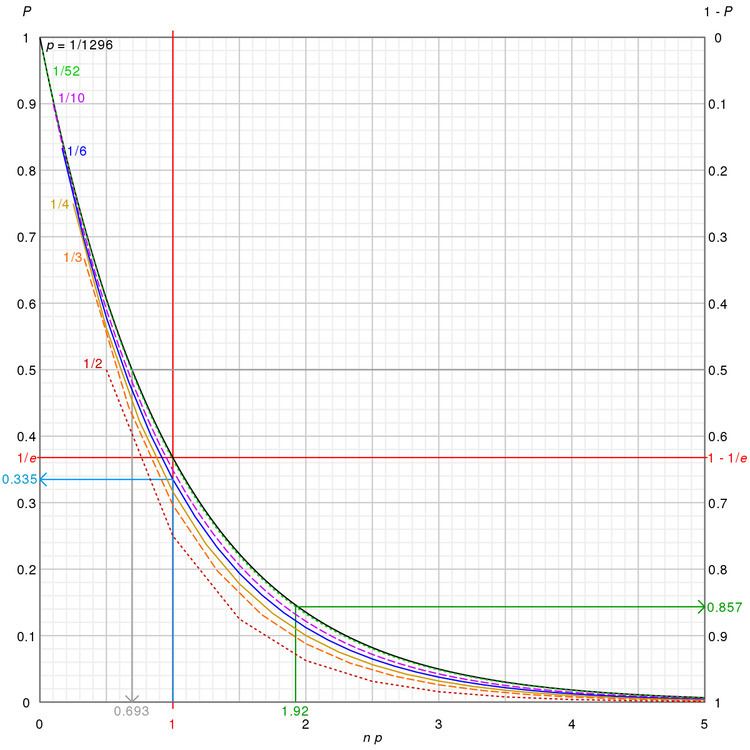 | ||
In the theory of probability and statistics, a Bernoulli trial (or binomial trial) is a random experiment with exactly two possible outcomes, "success" and "failure", in which the probability of success is the same every time the experiment is conducted. It is named after Jacob Bernoulli, a 17th century Swiss mathematician.
Contents
The mathematical formalisation of the Bernoulli trial is known as the Bernoulli process. This article offers an elementary introduction to the concept, whereas the article on the Bernoulli process offers a more advanced treatment.
Since a Bernoulli trial has only two possible outcomes, it can be framed as some "yes or no" question. For example:
Therefore, success and failure are merely labels for the two outcomes, and should not be construed literally. The term "success" in this sense consists in the result meeting specified conditions, not in any moral judgement. More generally, given any probability space, for any event (set of outcomes), one can define a Bernoulli trial, corresponding to whether the event occurred or not (event or complementary event). Examples of Bernoulli trials include:
Definition
Independent repeated trials of an experiment with exactly two possible outcomes are called Bernoulli trials. Call one of the outcomes "success" and the other outcome "failure". Let
Alternatively, these can be stated in terms of odds: given probability p of success and q of failure, the odds for are
These are multiplicative inverses, so they multiply to 1, with the following relations:
In the case that a Bernoulli trial is representing an event from finitely many equally likely outcomes, where S of the outcomes are success and F of the outcomes are failure, the odds for are
Note that here the odds are computed by dividing the number of outcomes, not the probabilities, but the proportion is the same, since these ratios only differ by multiplying both terms by the same constant factor.
Random variables describing Bernoulli trials are often encoded using the convention that 1 = "success", 0 = "failure".
Closely related to a Bernoulli trial is a binomial experiment, which consists of a fixed number
Bernoulli trials may also lead to negative binomial distributions (which count the number of successes in a series of repeated Bernoulli trials until a specified number of failures are seen), as well as various other distributions.
When multiple Bernoulli trials are performed, each with its probability of success, these are sometimes referred to as Poisson trials.
Example: tossing coins
Consider the simple experiment where a fair coin is tossed four times. Find the probability that exactly two of the tosses result in heads.
Solution
For this experiment, let a heads be defined as a success and a tails as a failure. Because the coin is assumed to be fair, the probability of success is
Using the equation above, the probability of exactly two tosses out of four total tosses resulting in a heads is given by:
